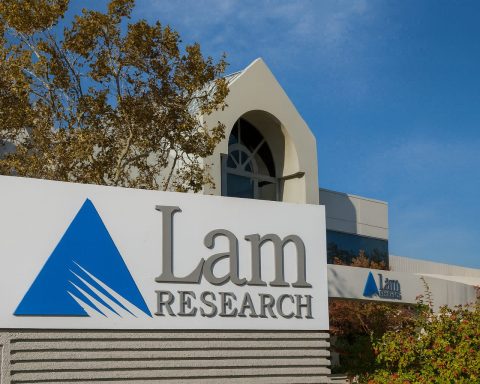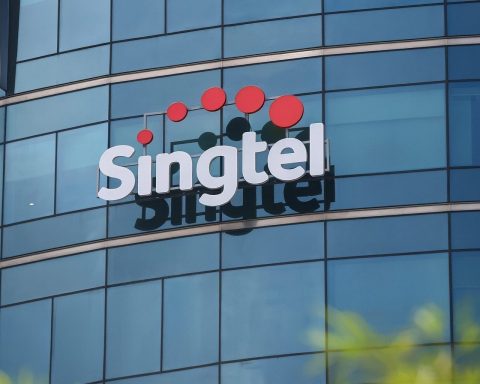- As of early 2024, Turkmenistan had about 2.59 million internet users, roughly 39.5% of the population—the lowest penetration in Central Asia.
- Turkmenistan’s telecom market is a state monopoly led by Turkmentelecom (Turkmen Telecom), with TM CELL/Altyn Asyr as the sole mobile operator after MTS exited in 2017–2018.
- There were about 4.34 million mobile subscriptions in early 2024, representing 66% of the population, with 3G introduced in 2010 and 4G LTE in 2013.
- In 2023 the government set a minimum broadband speed of 1 Mbps and a top tier of 6 Mbps, though real-world speeds are often far lower.
- The median fixed broadband speed was 5.2 Mbps in early 2024, while mobile average speeds were 6.1 Mbps in December 2023.
- Public internet access is tightly regulated, with state-controlled cafes and a censored Turkmenet, and users reportedly must sign agreements not to visit banned sites.
- VPNs are banned by law and actively suppressed, with authorities occasionally arresting people found with VPN apps.
- Public satellite internet is effectively unavailable; a 2015 ban outlawed home satellite dishes and Starlink has not been authorized.
- A 2019–2020 AzerTelecom agreement planned a 300 km Trans-Caspian cable from Turkmenbashi to Sumgait, aiming for 2–4 Tbps capacity as part of the Digital Silk Way.
- By June 2025 Arkadag became Turkmenistan’s first city with a pilot 5G network, using Huawei equipment and TürkmenÄlem satellite backhaul.
Overview of Turkmenistan’s Internet Landscape
Turkmenistan’s Internet Penetration: Turkmenistan remains one of the world’s least connected and most restricted internet environments. As of early 2024, only about 39.5% of the population (roughly 2.59 million people) were internet users [1]. Independent analyses estimate penetration around 34–40% into 2025 [2] [3] – the lowest rate in Central Asia [4]. In contrast, neighboring Kazakhstan and Uzbekistan enjoy internet usage rates around 80–90%, highlighting Turkmenistan’s significant digital gap. Access is largely concentrated in cities like Ashgabat, while rural connectivity remains minimal due to underdeveloped infrastructure [5] [6]. Notably, fewer than 2% of Turkmen citizens use social media, reflecting both limited access and heavy censorship [7].
Infrastructure and Availability: All internet and telecom services are state-owned and centralized. The national provider Turkmentelecom (through its mobile arm Altyn Asyr, a.k.a. TM CELL) holds a monopoly over internet service [8] [9]. Until 2017, Russian company MTS operated as a second mobile ISP, but government disputes led to MTS’s exit, leaving Altyn Asyr as the sole mobile operator [10] [11]. Fixed broadband access is very limited – Turkmentelecom’s DSL and fiber offerings exist mainly in Ashgabat and a few regional centers. In 2023 the government raised consumer broadband packages to a minimum of 1 Mbps and a top tier of 6 Mbps (up from 256 Kbps–2 Mbps before) [12]. However, these speeds are theoretical: users report that even paid 4–6 Mbps plans often deliver far lower throughput [13].
Mobile Networks: Mobile telephony has more reach than fixed lines, with about 4.34 million mobile subscriptions (66% of the population) in early 2024 [14]. Altyn Asyr operates a GSM/3G network and introduced 4G LTE in 2013 [15]. Coverage is decent in urban areas but patchy in rural regions. In February 2025, a 4G+ (LTE-Advanced) network was launched in the model “smart city” of Arkadag [16] [17]. By June 2025, Arkadag became the first city in Turkmenistan with a pilot 5G network, implemented in cooperation with China’s Huawei and using the national satellite for backhaul [18]. This 5G pilot is an exception – nationwide, Turkmenistan’s mobile data operates mostly on slower 3G/4G technologies. Even basic 3G access in rural areas is limited, and many users rely on older 2G networks for calls and SMS.
Internet Speeds, Costs, and Accessibility
Slow Speeds: Turkmenistan consistently ranks at the bottom of global internet speed indices. Median fixed broadband download speed was measured at only 5.2 Mbps in early 2024 [19]. Average speeds hover around 4–6 Mbps, placing Turkmenistan among the world’s slowest 10 countries for internet connectivity [20]. (For context, the global average broadband speed is about 80–100 Mbps [21] [22].) Mobile data speeds are similarly sluggish. In December 2023, the average mobile internet speed was 6.1 Mbps [23] – far below neighboring Uzbekistan’s ~21.6 Mbps [24] and Kazakhstan’s even higher averages. The government has intentionally under-invested in internet infrastructure, keeping networks “slow and unreliable compared to global standards” as a form of control [25] [26]. High latency and frequent outages are common, especially outside the capital.
High Costs and Affordability: Paradoxically, despite poor quality, internet access in Turkmenistan is expensive relative to local incomes. Turkmenistan had the most expensive broadband in the CIS region as of 2023, with an average monthly cost around $45.80 [27] [28]. (By comparison, Kazakhstan enjoys some of the cheapest broadband prices globally [29].) Mobile data is also costly: Turkmenistan’s data prices (over $11 per 1GB on average) ranked among the top 10 most expensive worldwide [30]. Official tariffs from state ISP Turkmentelecom underscore the high pricing: for example, a 1 Mbps home broadband plan costs 150 TMT ($7.70) per month, and 6 Mbps costs 280 TMT ($14.40) [31]. While these dollar figures may seem modest, they are significant in a country where salaries are low – making internet a luxury for many. In fact, internet is not affordable for most Turkmen citizens, with connectivity consuming far more than the recommended <1% of monthly income for a majority of households [32] [33]. This contributes to a deep digital divide: only elites, businesses, and some urban residents can readily afford private internet, while others rely on state-run public access points.
Access Points and Accessibility: Public internet access is tightly regulated. There are state-owned Internet cafés and Wi-Fi hotspots (mainly in Ashgabat’s hotels and certain public venues), but usage there is monitored. In the late 2000s, President Berdimuhamedov reopened some internet cafés (closed under his predecessor) but set high usage fees – historically around $4 per hour in a country where many earned <$100 a month [34] [35]. Today, some universities and workplaces have intranet or limited internet access, but content is filtered (often only the government’s censored Turkmenet). Home broadband connections exist for a minority; however, citizens report waiting many months (even over a year) for installation [36] [37]. When finally approved, subscribers must sign agreements – even swearing oaths on the Quran – pledging not to visit banned sites or use VPNs [38] [39]. Such requirements, along with fears of surveillance, deter many from seeking home internet at all. In effect, internet access is available only under controlled circumstances and remains out of reach (financially or logistically) for a large portion of Turkmenistan’s population.
Major ISPs and Telecom Infrastructure
State Monopoly and ISPs: Turkmenistan’s telecom market is a state-run monopoly. The primary operator Turkmentelecom (also known as Turkmen Telecom) controls all fixed telephone lines, internet gateways, and operates the only legal ISPs [40]. Its subsidiary Altyn Asyr (TM CELL) is the sole mobile network provider after the exit of Russian-owned MTS Turkmenistan. (MTS, which once served over 2.5 million Turkmen mobile users, had its license arbitrarily suspended and ultimately withdrew in 2017–2018 amid disputes over profit-sharing demands [41] [42]. Foreign telecom investment has been effectively scared off since that incident [43] [44].) A small number of niche providers exist for corporate or government clients (such as specialty networks for ministries), but Turkmentelecom governs all international bandwidth and infrastructure. All connections – whether fixed or mobile – route through state-controlled gateways in Ashgabat [45] [46].
Turkmentelecom operates the national backbone, which historically relied on costly satellite links. In the 2000s, the government began connecting to fiber optic transit routes (notably a Transit Europe-Asia (TAE) fiber line via Iran and potentially Kazakhstan) to improve capacity [47] [48]. In recent years, Turkmenistan has also pursued new fiber links, including a planned undersea fiber cable across the Caspian Sea to Azerbaijan. An agreement in 2019–2020 with AzerTelecom outlined a 300 km Trans-Caspian cable from Turkmenbashi to Azerbaijan (Sumgait), aiming for up to 2–4 terabits per second of capacity [49] [50]. When completed, this link would integrate Turkmenistan into the “Digital Silk Way” corridor, carrying European internet traffic into Central Asia [51]. (As of mid-2025, the project is reportedly in feasibility study stages [52] [53].) Domestically, Turkmentelecom has rolled out limited fiber-to-the-home (FTTH) in showcase areas – for example, the new Arkadag city has a GPON fiber network to each home [54] – but most of the country still depends on older copper lines or wireless networks.
Network Technologies: Turkmenistan’s fixed broadband is primarily ADSL/DSL over copper, with some fiber and cable in Ashgabat. There are a few thousand fixed broadband subscribers (421,000 “wired internet users” were officially counted in 2023, which is less than 8% of the population [55]). Mobile technology ranges from 2G up to LTE. Altyn Asyr introduced 3G in 2010 and a basic 4G LTE network in 2013 [56]. Coverage for 4G is mostly limited to Ashgabat and some regional centers, while vast rural areas have only 2G/EDGE for phone service. In June 2025, officials claimed to launch 5G in Arkadag as a pilot – making it the first 5G deployment in Turkmenistan [57]. This 5G network reportedly uses the TürkmenÄlem-52°E satellite to provide backhaul/frequency, given the lack of a robust terrestrial fiber backbone in that area [58] [59]. Huawei, which has a 20+ year relationship with Turkmenistan’s telecom sector, supplied the 5G base stations [60]. Outside Arkadag, however, there is no 5G yet; Turkmenistan significantly lags in modern telecom upgrades, effectively a decade behind global standards in network technology [61]. (For instance, neighboring Kazakhstan and Uzbekistan are already testing or rolling out 5G in major cities, while Turkmenistan is just beginning with one pilot site.)
Government Control, Censorship, and Legal Barriers
Internet access in Turkmenistan is heavily censored and regulated by the state. The government maintains strict control over ISPs and all information flow, making the country one of the most repressive online environments in the world [62] [63]. Key features of Turkmenistan’s internet governance include:
- Single Gateway & Surveillance: All international internet traffic funnels through government-operated gateways, enabling authorities to monitor and filter content extensively [64] [65]. State security services (the MNB) closely watch online communications; surveillance is pervasive, and citizens assume all emails, messages, and browsing are monitored [66]. Cyber cafes have cameras and require ID registration. This creates a climate of self-censorship – users fear that any dissenting online activity could be traced back to them [67].
- Website Blocking: The regime blocks a vast array of websites. News outlets, opposition sites, foreign media, and most social networks and messaging apps are inaccessible without circumvention. Facebook, YouTube, Twitter, Instagram, and major international news sites are routinely blocked [68]. Even many innocuous sites and online services are filtered. A recent study found over 120,000 domains blocked in Turkmenistan, reflecting an extremely broad censorship net [69]. The domestic internet (“Turkmenet”) is a tightly controlled subset with mainly state-approved content [70]. Attempts to access blocked sites result in timeouts or redirections; the state ISP employs both URL/IP blocking and throttling to enforce bans [71].
- VPNs and Anonymity Tools Banned: Because so much content is blocked, many Turkmen have tried using VPNs (virtual private networks) or Tor to bypass censorship. However, VPN usage is illegal and actively suppressed. The government has conducted intimidation campaigns against VPN users – for example, requiring new home internet subscribers to swear on the Quran not to use VPNs [72] [73]. Authorities periodically arrest individuals found with VPN apps on their phones [74]. Technical measures are also used: known VPN servers are blocked, and the ISP injects resets or slows down encrypted traffic. Turkmenistan is one of a handful of countries (alongside North Korea, Iran, etc.) that have outlawed all unauthorized VPNs by law [75]. Similarly, proxies and Tor are blocked when detected. Despite this, a cat-and-mouse game persists, with users seeking new VPN endpoints and the government constantly updating blocks (even crowd-sourcing info on VPN users to punish them).
- Legal and Licensing Barriers: By law, Turkmentelecom is the only licensed ISP, and private internet service provision is not allowed [76]. Individuals cannot legally establish an independent ISP or purchase satellite internet services without special permission. Cyber cafés and mobile operators are state-supervised. There are also restrictions on Wi-Fi – for instance, earlier regulations prohibited using Wi-Fi in public places without approval, to prevent unmonitored hotspots. The import of telecommunications equipment (routers, satellite phones, high-gain antennas) is restricted; such items are often confiscated at borders. All telecom operators are instructed to comply with government surveillance (lawful intercept) and data retention requirements. Essentially, every layer of internet access – from infrastructure to end-user behavior – is controlled by government policy in Turkmenistan [77] [78]. This command-and-control approach led the ITU to rate Turkmenistan as a “regulated public monopoly” in ICT governance, with one of the lowest regulatory freedom scores (6.7/100) globally [79] [80].
- Periodic Shutdowns and Throttling: The Turkmen government has demonstrated willingness to shut down or throttle the internet during sensitive periods. Observers noted that around certain events – e.g. the June 2023 grand opening of Arkadag city and high-profile visits – internet traffic “dropped to almost zero” for days in parts of the country [81] [82]. It appears authorities deliberately cut off or severely slowed the internet to prevent information flow (perhaps to avoid citizen reports or protests during these events). In 2023, Turkmenistan was listed among countries that implemented internet disruptions as a form of information control [83]. Even when not “off,” the state ISP at times throttles speeds on specific dates (e.g. around elections or holidays) to hinder communication. These tactics effectively serve as internet curfews or kill-switches that the regime employs when it feels threatened.
Consequences for Digital Rights: The heavy-handed control has severe human rights implications. Freedom House and other watchdogs consistently rank Turkmenistan as “Not Free” with one of the worst internet freedom scores on earth (often only surpassed by North Korea) [84] [85]. The country is routinely listed among the “10 Most Censored Countries” and “Enemies of the Internet.” Independent bloggers or citizens who criticize the government online face harsh reprisals. There are documented cases of people being interrogated, jailed, or exiled for social media posts or YouTube videos that disparage authorities [86] [87]. State surveillance extends to private messaging: using apps like WhatsApp or Signal (even via VPN) can draw scrutiny, and informants keep tabs on who shares files or news from abroad. The climate of fear means that self-censorship is rampant – most Turkmen would not dare post or even “like” political content online. Moreover, the lack of affordable, uncensored internet access has become a development and human rights issue: citizens are deprived of independent information, educational resources, and communication tools, exacerbating isolation. In summary, Turkmenistan’s government maintains an iron grip on cyberspace, treating the internet not as a public service but as a potential threat to be contained.
Satellite Internet Access in Turkmenistan
Availability of Satellite Internet: Given the restrictive terrestrial network, one might wonder about satellite internet as an alternative. In practice, satellite internet access for the general public is virtually nonexistent in Turkmenistan. The government has actively discouraged and even banned private satellite equipment. Notably, in 2015 Turkmen authorities outlawed all satellite dishes on homes, physically removing thousands of dishes to cut off access to foreign TV and radio signals [88] [89]. This ban encompassed satellite television receivers, but it also means citizens cannot legally install VSAT terminals or satellite modems without permission. The intent, as reported, was to block independent information from abroad – a policy that clearly extends to internet data as well [90].
Currently, no global satellite ISP (such as SpaceX Starlink) is officially authorized in Turkmenistan. On Starlink’s service availability map, Turkmenistan (along with Uzbekistan and Tajikistan) is marked as “date of service currently unknown,” with rollout stalled indefinitely [91]. In 2022 there were announcements that high-speed satellite broadband might come to Central Asia in 2023, but as of 2025 Turkmenistan has not seen any Starlink or OneWeb service launch [92]. The likely reason is regulatory – Turkmen authorities would have to approve such services, and given their insistence on controlling internet gateways, they have so far withheld permission. (By contrast, neighboring Kyrgyzstan moved forward with Starlink trials, highlighting Turkmenistan’s reluctance to allow uncensored satellite links [93].)
That said, satellite connectivity does exist in Turkmenistan for select uses: the government itself utilizes satellites for communications, and certain foreign businesses, embassies, or NGOs operate satellite terminals with special licenses. Turkmenistan launched its first national communications satellite, TürkmenÄlem 52°E (TurkmenSat 1), in 2015, in partnership with Thales Alenia Space and SpaceX [94]. This satellite provides coverage over Turkmenistan and beyond, with transponders for TV, radio, and potentially internet data links [95]. However, access to TürkmenÄlem’s capacity is controlled by the Turkmen National Space Agency and is presumably used for state media distribution, government communications, and perhaps some enterprise VSAT links – not for opening uncensored internet to citizens. In fact, the new 5G pilot in Arkadag leverages this satellite for backhaul [96], indicating the satellite’s bandwidth is allocated to state-run projects.
Private Satellite Providers: A few international satellite service companies advertise coverage in Turkmenistan aimed at corporate or government clients. For example, providers like BusinessCom Networks or GlobalTT offer VSAT broadband that can technically cover Turkmenistan’s territory [97] [98]. These services use C-band, Ku-band, or newer LEO satellite constellations (OneWeb, etc.) to deliver internet to remote sites. GlobalTT even touts “independence from government interference” with a direct satellite uplink out of Turkmenistan to European gateways [99]. In practice, however, any organization installing such equipment in Turkmenistan would need government clearance and licensing. It is likely limited to diplomatic missions, foreign companies in the oil & gas sector, or possibly humanitarian projects that negotiated access. Ordinary Turkmen citizens cannot simply subscribe to an independent satellite ISP – importing the satellite terminal and dish would be illegal and conspicuous. Indeed, anecdotal reports suggest that authorities clamp down on anyone suspected of unapproved satellite communications, given their past actions against TV dishes and VPN usage.
Government Stance: The Turkmen government’s stance on satellite internet is essentially one of tight control and skepticism. Allowing open satellite internet would undermine the state’s monopoly on data and its censorship regime. As such, satellite internet is either blocked or tightly permissioned. For instance, Turkmenistan did not join other countries in welcoming SpaceX’s Starlink – despite the country’s own prior collaboration with SpaceX to launch TürkmenÄlem. Turkmenistan’s authoritarian leadership likely views independent satellite broadband as a security risk, potentially enabling citizens to bypass national firewalls. Legally, any satellite communications device or service in Turkmenistan must be licensed by the government, and those licenses are rarely, if ever, given to private individuals. The only “satellite internet” officially in use is that which the government itself controls: e.g. connectivity for certain government offices, and the aforementioned Arkadag 5G backhaul via the state satellite [100] [101].
For Turkmenistan’s population, this means practical access to satellite internet is nil – one cannot purchase a Starlink kit or a Thuraya IP modem and get online without breaking the law. Some resourceful users in border regions have tried to pick up mobile signals from neighboring countries or use satellite phones smuggled in, but these carry enormous risk if discovered. The disparity is glaring when compared to regional peers: Kazakhstan and Uzbekistan have at least explored or piloted satellite internet options (though with their own regulatory caution), whereas Turkmenistan remains essentially closed off to outside internet beams. In summary, satellite connectivity in Turkmenistan exists behind the scenes for state use and select entities, but it is not a solution available to the general public under the current regime’s policies.
Satellite vs. Terrestrial Internet: Theoretically, satellite internet could provide much faster speeds and broader coverage than Turkmenistan’s poor terrestrial network – for example, Starlink promises 100–200 Mbps which dwarfs the <10 Mbps Turkmen users get today [102] [103]. It could also connect remote desert communities that have no fiber or cell coverage. However, given the government’s censorship priorities, any benefits of satellite internet are outweighed by the loss of control it would entail. Thus, in Turkmenistan’s case, the comparison is moot: terrestrial internet is slow, urban-centric, and censored, while satellite internet is officially absent (and would be censored too if ever allowed). Until there is political change or an agreement to allow managed satellite services, Turkmenistan’s internet landscape will continue to rely on its state-run terrestrial infrastructure, for better or worse.
Recent Developments and Investments
Despite the grim status quo, there have been some recent initiatives and international engagements regarding Turkmenistan’s internet and telecom sector:
- “National Digital Network” Initiative: In 2022, Turkmenistan announced plans for a so-called national “digital network” that would not be connected to the global internet [104]. This appears to be an attempt to create a domestic intranet for e-government and information sharing under full state control. Little public info on its progress came out in 2023, but Turkmen officials claimed organizations like the UNDP were consulting on it [105]. The proposal raised concerns, since a closed national network could further wall off Turkmen citizens from the World Wide Web. The status of this project remains unclear, suggesting it may be quietly developing or facing technical hurdles.
- Telecom Infrastructure Upgrades: Turkmenistan has slowly pursued upgrades. Notably, the showcase city Arkadag (opened mid-2023) is a focus of modern infrastructure. The city was built with fiber-optic lines to every building and touted as a “smart city” pilot [106]. In 2024–2025, Arkadag saw the introduction of 4G+ and 5G (as mentioned earlier) [107] [108]. The government likely views Arkadag as a testing ground for new tech (under tightly controlled conditions) before broader rollout. Additionally, in June 2025, Turkmenistan’s “Türkmenaragatnaşyk” (the Telecom Agency) officially announced the launch of 5G in Arkadag and possibly parts of Ashgabat, signaling the country’s first step toward next-gen mobile networks [109]. Huawei’s long-term partnership was reaffirmed – the company is providing equipment and expertise for Turkmenistan’s digitalization (Huawei has even suggested Turkmenistan could become a “regional digital hub” if it modernizes, an ambitious notion given current restrictions) [110] [111].
- International Fiber Projects: As discussed, Turkmenistan’s involvement in the Trans-Caspian Fiber Optic Cable is a significant international project. Along with Azerbaijan (and indirectly Kazakhstan), this project – part of the larger Digital Silk Road – could dramatically increase Turkmenistan’s international bandwidth capacity and diversify its routes [112] [113]. Work on the Azerbaijan-Turkmenistan undersea cable was delayed (likely by the pandemic and technical coordination issues), but as of mid-2025 feasibility studies and surveys were reportedly advancing [114] [115]. If completed in the coming years, the cable will link Turkmenistan directly to Azerbaijan’s internet exchange point, improving speed and resilience (and giving Turkmenistan alternative routing for traffic beyond its current reliance on Russia/Iran). However, whether this translates to better consumer internet depends on Turkmen government policies; increased capacity could just as well be throttled or underutilized if censorship remains priority.
- Regional Cooperation: Turkmenistan has also engaged in some regional telecom discussions. It participates in the Regional Commonwealth in Communications (RCC), a post-Soviet telecom cooperation body. There have been talks of Turkmenistan collaborating with other Central Asian states on connectivity corridors (like potentially linking the Trans-Caspian cable onward to Uzbekistan, Afghanistan, etc. as mentioned in Digital Silk Way plans [116]). In practice, Turkmenistan’s isolationist stance means it’s often a bottleneck – e.g., data from Uzbekistan to Azerbaijan could ideally transit Turkmenistan, but Turkmen authorities historically limited transit traffic. International pressure and economic needs (like diversifying beyond gas exports) may be nudging Ashgabat to modestly improve its ICT infrastructure with foreign help.
- Economic and Policy Reforms: While no sweeping reforms have occurred in internet governance, Turkmenistan’s leadership has, at least outwardly, spoken about modernizing the economy and “digitalizing.” President Serdar Berdymukhamedov (who took office in 2022) has made public statements about improving internet access for the public, especially for education and innovation. For instance, state media often highlight new computer centers, tech parks, or IT courses opening – but these are tightly choreographed. In 2023, Turkmenistan hosted its annual TurkmenTel Expo, where companies from Russia, China, and Europe were invited to exhibit telecom and IT solutions. Contracts for things like expanding 4G coverage, installing data centers, or satellite tech are sometimes signed at these forums. One example: Turkmenistan partnered with Uzbek firms to lay fiber to the border, improving cross-border links (as part of a broader thaw in Turkmen-Uzbek relations). Also, in late 2022 the country joined the Trans-Eurasian Information Super Highway (TASIM) project, which aims to create a fiber optic backbone from Europe to Asia – though this overlaps with the Caspian cable efforts.
- Digital Services: On the services front, Turkmenistan has been slow but steady in adopting things like online government portals (the e-Government portal exists but is mostly informational), online banking (just starting via state banks), and local content platforms. Given heavy censorship, most “digital content” is state-approved. However, one development is the government encouraging a domestic tech sector: e.g., a Turkmen-developed messaging app “Imo” clone (or government-approved messenger) was pushed for use inside the country after WhatsApp and others were blocked. In terms of human development, international organizations have tried to support digital literacy and inclusion projects in Turkmenistan – though reaching the population is challenging. The UN’s ITU has noted Turkmenistan’s low internet penetration and offered support to improve rural connectivity; some modest investments in community satellite terminals or mobile libraries have occurred under UN auspices, but these are small-scale.
In summary, recent investments have focused on state-controlled modernization (5G in a showcase city, national intranet, new fiber links) rather than liberalization of access. International partnerships (mostly with friendly nations or companies like Huawei) are helping build infrastructure, but as long as the political climate remains repressive, these upgrades may not significantly improve everyday internet freedom for Turkmen citizens. The government balances introducing new technology with ensuring it can be tightly regulated – resulting in a paradox where Turkmenistan builds advanced networks (like GPON fiber and even 5G), yet its people still experience one of the poorest internet environments in terms of openness and speed.
Turkmenistan vs. Regional and Global Benchmarks
Turkmenistan’s internet landscape is often considered an outlier, even among its Central Asian peers. Below is a comparative snapshot illustrating where Turkmenistan stands on key metrics relative to neighboring countries and global averages:
| Country | Internet Penetration (%, population) | Avg. Fixed Download Speed (Mbps) | Avg. Broadband Cost (USD/month) |
|---|---|---|---|
| Turkmenistan | 39–40% [117] [118] (2024) – Lowest in Central Asia | ~5 Mbps [119] [120] (one of world’s slowest) | ~$46 [121] [122] (Most expensive in CIS) |
| Kazakhstan | ~91% [123] (2023) – Near universal access | ~40–50 Mbps (cities avg >50) [124] [125] | ~$13 (Estimated; among world’s cheapest) [126] |
| Uzbekistan | ~77% [127] (2023) – High access growth recently | ~22 Mbps [128] | ~$15–20 (Moderate, prices falling) |
| Kyrgyzstan | ~80% [129] (2024) – Significant mobile usage | ~25 Mbps (urban), lower rural | ~$7–10 (Affordable; Kyrgyzstan ranks high in cost–income parity) [130] [131] |
| Tajikistan | ~42% [132] (2024) – Low, but similar to Turkmenistan | ~10 Mbps (very limited outside cities) | ~$20+ (Still expensive for many) |
| Global Average | ~66% (2023) – Majority of world online | ~80 Mbps (broadband) [133] [134] | ~$30 (varying widely by region) |
Table: Internet indicators for Turkmenistan vs. others. Turkmenistan has drastically lower internet penetration than its neighbors (which are 2–3 times higher) and suffers far slower speeds. Its broadband cost is an outlier – even impoverished Tajikistan has somewhat cheaper internet, while Kazakhstan’s broadband is both fast and extremely cheap by comparison. Turkmenistan’s combination of low access, poor quality, and high cost underscores its unique challenges [135] [136].
In Central Asia, Kazakhstan leads in internet development: over 90% of its people are online, enjoying relatively fast connections (Kazakh cities have widespread fiber and 4G, and 5G is being piloted) [137] [138]. Kazakhstan also benefits from multiple international fiber routes and open market competition among ISPs, driving down consumer prices. Uzbekistan has rapidly expanded internet under reforms since 2016 – now over three-quarters of Uzbeks use the internet [139], and while censorship exists there (certain political blocks), the degree is far less than Turkmenistan. Uzbekistan’s speeds and prices have improved with Chinese investment in telecom and more mobile providers in the market. Kyrgyzstan stands out for having a relatively free internet (it’s rated “Partly Free” by Freedom House, unlike all other Central Asian countries which are “Not Free”) [140] [141]. Kyrgyzstan’s internet penetration (~80%) and low cost (often <$8 for unlimited broadband) reflect a liberalized telecom sector with multiple ISPs and generally no nationwide blocking of sites (aside from occasional court orders against extremist content). Tajikistan is more similar to Turkmenistan in penetration (around 40%), largely due to poverty and rugged terrain limiting infrastructure. But even Tajikistan’s government, while authoritarian, does not impose as comprehensive a blackout of sites as Turkmenistan – though Tajikistan has censored social media during unrest and charges high prices, it still permits a controlled degree of online media and uses the Russian internet more openly.
Globally, Turkmenistan’s metrics place it near the bottom. For example, Turkmenistan ranked 206th of 220 countries in a 2023 worldwide broadband speed index [142]. It is consistently in the bottom five for internet freedom and press freedom rankings [143] [144]. On affordability, a 2022 analysis by Cable.co.uk cited Turkmenistan as having the 7th most expensive mobile data in the world [145]. In contrast, many developing countries (even with lower GDP per capita than Turkmenistan) have managed to provide cheaper and more accessible internet through market reforms or subsidized programs – something Turkmenistan’s insular approach has not achieved.
It is also worth noting the digital gender gap and urban-rural gap in Turkmenistan: urban centers like Ashgabat dominate the existing internet subscriptions, whereas rural villages often have virtually no internet access. This is partially mirrored in other Central Asian states, but again Turkmenistan’s absolute levels are worst. The human capital aspect is similarly lagging – fewer Turkmen have ICT skills or IT education opportunities compared to Kazakhs or Uzbeks, where outsourcing and tech startups are emerging. Essentially, Turkmenistan is an extreme case of digital isolation, with metrics more comparable to closed regimes like North Korea or Eritrea than to its geographic neighbors.
Digital Inclusion and Human Rights Issues
Internet access in Turkmenistan isn’t just a tech or economic issue – it’s fundamentally tied to human rights and freedoms. The severe restrictions on connectivity and online content translate to restrictions on freedom of expression, access to information, and the ability to participate in the digital world.
Freedom of Expression: Because the state blocks independent media websites and virtually all social media, Turkmen citizens cannot freely access news or communicate online. Websites of organizations like RFE/RL’s Turkmen service, Eurasianet, or Amnesty International are blocked, leaving state propaganda as the main “news” available [146] [147]. Those who try to speak out via internet – such as YouTube bloggers or Facebook users critical of the government – face harassment or imprisonment. There are reports of bloggers operating from exile (in Turkey or Europe) being targeted; some have even been forcibly returned to Turkmenistan to face charges [148] [149]. Inside the country, self-censorship is the norm. As one resident put it, “nothing is accessible without VPNs,” but using a VPN could land you in trouble [150]. This climate means there is practically no online dissent or independent journalism originating from within Turkmenistan – stifling civic discourse.
Access to Information and Education: The average Turkmen student or professional is cut off from global knowledge resources. Many international educational sites or even services like Coursera or Khan Academy are likely blocked or too slow to use. During the COVID-19 pandemic, when other countries moved to online learning, Turkmenistan’s internet limitations made remote education very difficult (the government, which denied COVID’s presence, did not implement widespread online schooling). The lack of reliable internet also impedes economic opportunity – e.g. Turkmen freelancers or businesses can’t easily engage in e-commerce, outsourcing, or even advertise beyond the country. Digital inclusion is very low; much of the population, especially women and rural communities, remain offline and digitally illiterate. A recent study noted that the near absence of internet access in rural areas makes digital literacy a “pipe dream” for those communities [151] [152]. In an era when information access is considered a prerequisite for development, Turkmenistan’s policies have effectively disenfranchised its people from the digital revolution.
Privacy and Surveillance: Those who are online in Turkmenistan have no privacy. The government’s surveillance not only monitors content but also uses it to instill fear. It’s reported that security agencies keep records of who visits what site, and even periodic checks of personal devices occur (police have stopped people to inspect phones for banned apps or media). The result is a chilling effect – people avoid discussing anything sensitive even in private chats. The implication for human rights is serious: freedom of thought and association are curtailed when all communications might be watched. Activists abroad also report their families in Turkmenistan are pressured or punished if the activists run dissident online content. For example, relatives of exile bloggers have been interrogated to compel the blogger to stop – a form of collective reprisal that violates fundamental rights [153] [154].
Inequality and Isolation: Turkmenistan’s restrictive internet exacerbates inequality. Only the wealthy or well-connected can afford home broadband (and even then it’s censored). Urban elites might access somewhat less-filtered internet through government networks, while ordinary people cannot. This creates an information aristocracy versus the uninformed masses. Moreover, Turkmenistan’s populace is isolated from the world – unlike, say, many Iranians or Chinese who still find ways to engage with global social media and communities despite censorship, Turkmenistan’s tight grip has largely succeeded in preventing its citizens from any meaningful participation on the global internet. This isolation means voices from Turkmenistan are rarely heard in international dialogue, and Turkmen people have difficulty contacting even diaspora family members (since services like WhatsApp/Telegram are blocked). It also means fewer eyes on human rights abuses within Turkmenistan, as there is scant citizen reporting via Twitter or other platforms that often bring attention to crises in other countries.
On the positive side, digital resistance efforts are underway: NGOs and projects like The Tor Project have been working to help Turkmenistanis bypass censorship. For instance, volunteers provide Tor “bridges” specifically to users in Turkmenistan so they can access an uncensored web secretly [155] [156]. During the March 2023 Turkmen elections, the Tor network ramped up support to counter increased blocking by authorities [157]. Such efforts are lifelines for the few netizens in Turkmenistan who dare to seek real information. Additionally, Turkmen activists in exile run YouTube channels and chat groups to disseminate news back home (relying on those with VPNs to redistribute content). International human rights organizations continue to call out Turkmenistan’s internet repression: for example, the UN Committee Against Torture in 2025 voiced alarm at Turkmenistan’s persecution of online activists and urged the regime to cease these practices [158] [159].
In conclusion, internet access in Turkmenistan is not merely a technical utility but a contested space of freedom vs. control. The government’s stranglehold over digital connectivity contributes directly to the suppression of human rights. Any discussion of improving internet in Turkmenistan, therefore, cannot ignore the need for policy changes that prioritize openness and rights. So far, Turkmenistan remains a stark example of how an authoritarian state can harness control of the internet to reinforce isolation – with grave costs to its population’s knowledge, economic prospects, and freedoms. Future improvements in Turkmenistan’s internet landscape will depend not only on cables and satellites, but on political will to allow a free and inclusive digital society, something that, at present, appears distant.
Sources: Turkmenistan’s internet indicators and policies were compiled from DataReportal digital reports [160] [161], independent watchdog analyses [162] [163] [164], and news reports by RFE/RL and others on censorship and ISP monopolies [165] [166]. The comparison data draws on regional statistics (Kazakhstan, etc.) and global indexes [167] [168], while details on satellite connectivity and recent developments reference official agreements and tech news sources [169] [170]. These illustrate the extreme constraints on internet access in Turkmenistan and the implications for its citizens’ digital rights.
References
1. datareportal.com, 2. monitor.civicus.org, 3. datareportal.com, 4. theurbanactivist.com, 5. theurbanactivist.com, 6. theurbanactivist.com, 7. datareportal.com, 8. progres.online, 9. progres.online, 10. timesca.com, 11. timesca.com, 12. progres.online, 13. progres.online, 14. datareportal.com, 15. en.wikipedia.org, 16. en.wikipedia.org, 17. en.wikipedia.org, 18. en.wikipedia.org, 19. datareportal.com, 20. progres.online, 21. monitor.civicus.org, 22. progres.online, 23. progres.online, 24. progres.online, 25. theurbanactivist.com, 26. progres.online, 27. progres.online, 28. progres.online, 29. progres.online, 30. progres.online, 31. progres.online, 32. progres.online, 33. progres.online, 34. www.budde.com.au, 35. www.budde.com.au, 36. www.rferl.org, 37. www.rferl.org, 38. www.rferl.org, 39. www.rferl.org, 40. progres.online, 41. timesca.com, 42. timesca.com, 43. progres.online, 44. progres.online, 45. en.wikipedia.org, 46. en.wikipedia.org, 47. en.wikipedia.org, 48. en.wikipedia.org, 49. digitalsilkway.az, 50. digitalsilkway.az, 51. digitalsilkway.az, 52. x.com, 53. x.com, 54. en.wikipedia.org, 55. en.wikipedia.org, 56. en.wikipedia.org, 57. en.wikipedia.org, 58. www.turkmenportal.com, 59. arkadag-shaheri.gov.tm, 60. arkadag-shaheri.gov.tm, 61. rfbenchmark.com, 62. www.irex.org, 63. www.rferl.org, 64. en.wikipedia.org, 65. en.wikipedia.org, 66. en.wikipedia.org, 67. en.wikipedia.org, 68. www.rferl.org, 69. www.irex.org, 70. en.wikipedia.org, 71. monitor.civicus.org, 72. www.rferl.org, 73. www.rferl.org, 74. www.rferl.org, 75. www.trustedinternet.io, 76. opennet.net, 77. progres.online, 78. progres.online, 79. progres.online, 80. progres.online, 81. progres.online, 82. progres.online, 83. progres.online, 84. www.irex.org, 85. www.rferl.org, 86. monitor.civicus.org, 87. monitor.civicus.org, 88. www.advanced-television.com, 89. www.advanced-television.com, 90. www.advanced-television.com, 91. daryo.uz, 92. daryo.uz, 93. daryo.uz, 94. en.wikipedia.org, 95. en.wikipedia.org, 96. en.wikipedia.org, 97. www.bcsatellite.net, 98. www.globaltt.com, 99. www.globaltt.com, 100. www.turkmenportal.com, 101. en.wikipedia.org, 102. daryo.uz, 103. monitor.civicus.org, 104. progres.online, 105. progres.online, 106. en.wikipedia.org, 107. en.wikipedia.org, 108. en.wikipedia.org, 109. en.wikipedia.org, 110. arkadag-shaheri.gov.tm, 111. www.orient.tm, 112. digitalsilkway.az, 113. digitalsilkway.az, 114. x.com, 115. x.com, 116. digitalsilkway.az, 117. datareportal.com, 118. monitor.civicus.org, 119. datareportal.com, 120. monitor.civicus.org, 121. progres.online, 122. progres.online, 123. datareportal.com, 124. progres.online, 125. progres.online, 126. progres.online, 127. datareportal.com, 128. progres.online, 129. 24.kg, 130. 24.kg, 131. 24.kg, 132. datareportal.com, 133. monitor.civicus.org, 134. progres.online, 135. progres.online, 136. progres.online, 137. digitalrights.asia, 138. www.newscentralasia.net, 139. datareportal.com, 140. asiaplustj.info, 141. asiaplustj.info, 142. progres.online, 143. monitor.civicus.org, 144. www.rferl.org, 145. progres.online, 146. www.advanced-television.com, 147. monitor.civicus.org, 148. monitor.civicus.org, 149. monitor.civicus.org, 150. www.rferl.org, 151. www.irex.org, 152. www.irex.org, 153. monitor.civicus.org, 154. monitor.civicus.org, 155. theurbanactivist.com, 156. theurbanactivist.com, 157. theurbanactivist.com, 158. monitor.civicus.org, 159. monitor.civicus.org, 160. datareportal.com, 161. datareportal.com, 162. www.irex.org, 163. progres.online, 164. www.rferl.org, 165. www.rferl.org, 166. timesca.com, 167. progres.online, 168. asiaplustj.info, 169. digitalsilkway.az, 170. en.wikipedia.org










